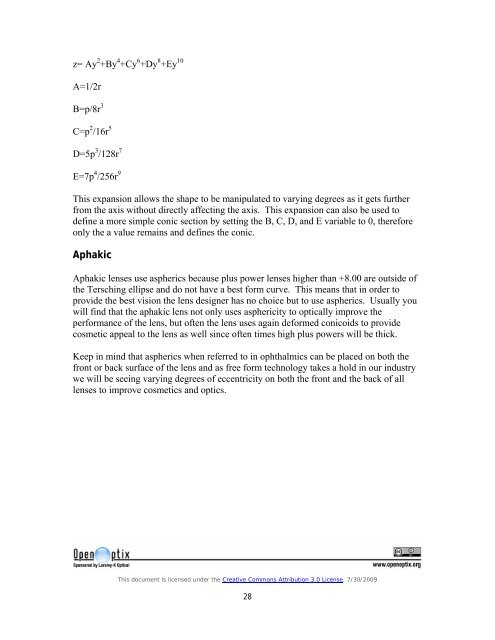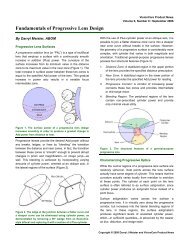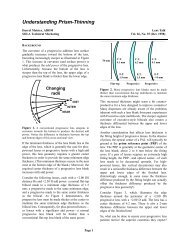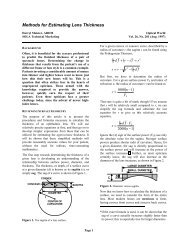OpenOptix ABO Study Guide - Laramy-K Optical
OpenOptix ABO Study Guide - Laramy-K Optical
OpenOptix ABO Study Guide - Laramy-K Optical
You also want an ePaper? Increase the reach of your titles
YUMPU automatically turns print PDFs into web optimized ePapers that Google loves.
z= Ay 2 +By 4 +Cy 6 +Dy 8 +Ey 10<br />
A=1/2r<br />
B=p/8r 3<br />
C=p 2 /16r 5<br />
D=5p 3 /128r 7<br />
E=7p 4 /256r 9<br />
This expansion allows the shape to be manipulated to varying degrees as it gets further<br />
from the axis without directly affecting the axis. This expansion can also be used to<br />
define a more simple conic section by setting the B, C, D, and E variable to 0, therefore<br />
only the a value remains and defines the conic.<br />
Aphakic<br />
Aphakic lenses use aspherics because plus power lenses higher than +8.00 are outside of<br />
the Tersching ellipse and do not have a best form curve. This means that in order to<br />
provide the best vision the lens designer has no choice but to use aspherics. Usually you<br />
will find that the aphakic lens not only uses asphericity to optically improve the<br />
performance of the lens, but often the lens uses again deformed conicoids to provide<br />
cosmetic appeal to the lens as well since often times high plus powers will be thick.<br />
Keep in mind that aspherics when referred to in ophthalmics can be placed on both the<br />
front or back surface of the lens and as free form technology takes a hold in our industry<br />
we will be seeing varying degrees of eccentricity on both the front and the back of all<br />
lenses to improve cosmetics and optics.<br />
This document is licensed under the Creative Commons Attribution 3.0 License. 7/30/2009<br />
28









